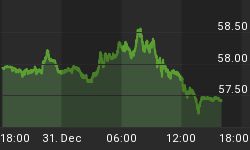A question :- If all the gold ever produced in the world was formed into a single block how long would its edge be?
- The length of a tennis court [22 metres] ?
- The length of a football pitch [100 metres] ?
- The length of a golf shot [200 metres] ?
In fact at 19 metres it's quite a bit shorter than a tennis court, and that includes all the privately held coins, bars and jewellery in the world - some 75% of the total. The world's monetary gold reserve is a block of only one quarter that volume, and America's reserve is only one quarter of that. Fort Knox hides only a modest hole in the ground.
There's not much gold left elsewhere in the ground either. Approximately 50,000 tonnes (about a third of what is already out) remains un-mined and will cost in excess of $300 an ounce to extract. Meanwhile - after steadily more detailed worldwide surveys - the mining industry consensus is that large mineral deposit discoveries are now a thing of the past.
Gold is - as it always has been - extremely scarce.
Here is a table of gold amounts and values. Take a deep breath before the last few lines.
| Kilograms | Value @ 390$ / Oz | Litres | How much |
| 0.008 | $100 | 0.00041 | A British sovereign coin |
| 0.031 | $390 | 0.00161 | US Eagle / Canadian Maple coin |
| 0.100 | $1,254 | 0.00518 | |
| 0.500 | $6,269 | 0.02591 | |
| 1 | $12,539 | 0.0518 | 1 kilo - a golf ball sized sphere |
| 2 | $25,077 | 0.1036 | |
| 3 | $37,616 | 0.1554 | |
| 4 | $50,154 | 0.2073 | |
| 5 | $62,693 | 0.2591 | |
| 6 | $75,231 | 0.311 | A can of 'Coke' |
| 7 | $87,770 | 0.363 | |
| 8 | $100,309 | 0.415 | |
| 9 | $112,847 | 0.466 | |
| 10 | $125,386 | 0.518 | |
| 12 | $156,000 | 0.645 | A standard 400 oz bullion bar |
| 20 | $250,772 | 1.04 | A litre bottle of water |
| 50 | $626,929 | 2.59 | |
| 100 | $1,253,858 | 5 | A good sized deposit box |
| 1,000 | $12,538,580 | 52 | |
| 10,000 | $125,385,802 | 518 | Half a cubic metre - fits in a corner of a small bank vault. |
| 100,000 | $1,253,858,025 | 5,181 | |
| 1,000,000 | $12,538,580,000 | 51,813 | A small living room - and more than twice Britain's gold reserve. |
| 8,139,000 | $102,051,504,000 | 421,710 | The US gold reserve fits into a town house. |
| 30,000,000 | $376,163,190,000 | 1,554,404 | The world's total financial reserve of gold (central banks + significant global financial institutions like International Monetary Fund and Bank for International Settlements) |
| 100,000,000 | $1,253,858,024,000 | 5,181,347 | The approximate total of all privately held jewellery, bullion and coin |
| 140,000,000 | $1,755,401,234,000 | 7,253,886 | All the gold in the world - A block with edges 3 metres short of a standard sized tennis court. |
| $7,000,000,000,000 | The approximate value of US sovereign debt (which excludes future welfare obligations, none of which have been reserved in the public accounts [see below - generational debt]) | ||
| $25,000,000,000,000 | The approximate value of the world's nominal sovereign debt. | ||
| $44,000,000,000,000 | The approximate value of the US generational debt - the cost of providing to the current working population what it believes itself entitled to in future welfare. i.e. the extent to which the US government has failed to reserve assets to pay for implied promises. |
Of the US sovereign debt some 40% is owed to foreigners; a lot to the Japanese. They've been holding on to US Treasury bonds which they bought with the dollars they took in payment for all those Toyotas.
But now they are unhappy at losing their savings to the falling dollar. Their finance minister recently decided to convert some of their dollars into gold.
And the Chinese too are an inscrutable lot. What a thought that their colossal accumulated dollar reserve could - almost at the whim of a senior Chinese bureaucrat - open a long gold futures position and run it to delivery on our own markets, and thereby convert a large slice of their dollar reserves into bullion.
We'd better be very polite in all those discussions about trade and human rights.
Enjoy learning about the history of gold's role in money and international trade and make your own comparison to the world around you. Articles in the series include :-
















